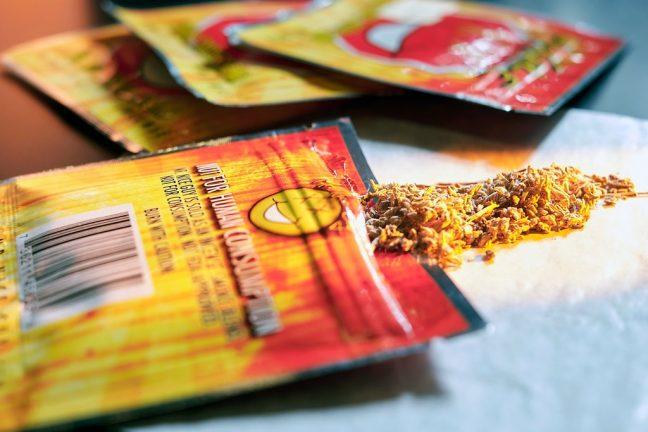Earlier this month more than 100 people Illinois, Indiana and Wisconsin were rushed to the hospital, and three of these people died. All were admitted due severe side effects of synthetic marijuana laced with rat poison. Patients were coughing up blood, had purple blotches on the skin, blood in their urine and were bleeding from their gums and nose. Unfortunately, people continue to enter the hospital doors while authorities race to find the distributors and origin of the toxic drug.
It has been documented that extreme drug users sometimes take rat poison in addition to using cocaine or marijuana to extend their high. But the amounts of rat poison found in the victims of this outbreak have been extremely high, it is likely that they did not know what they were taking. Regardless, the attempt to get high on synthetic marijuana is dangerous.
Synthetic marijuana is dried plant matter that is sprayed with chemicals, and then smoked. The chemicals attach to the same receptors in the brain that THC (the active compound in cannabis) does. The difference lies in the way they bond, THC weakly attaches to the receptors and then is released quickly. Synthetic marijuana has compounds that fiercely attach to those same receptors and do not let go as quickly. This effectively makes synthetic marijuana extremely more potent than normal cannabis. The molecular compositions of the chemicals used in synthetic marijuana have not been thoroughly researched. This creates a gap in knowledge and safety for at-risk users.
Users of synthetic marijuana are mainly found in communities with low socioeconomic status, the incarcerated, and those in the military. Yes, the military — a Scientific American article said: “Earlier this year dozens of U.S. soldiers and Marines were hospitalized after allegedly vaping synthetic cannabinoid oil.” This drug is harming people who are systematically oppressed and those fighting the frontline for our country. The reason they are taking the drug is to get high without being caught as synthetic cannabis doesn’t appear of most drug screenings — this is a dangerous risk to take. What if the risk wasn’t necessary?
The legalization of marijuana has been a hot topic over the past few years, it’s time for the conversation to include the increased safety it would bring to cases like this midwest rat poison outbreak. The health effects of laced illegal marijuana, synthetic or otherwise, and health benefits of THC with CBD is reason enough to push for its legality.
The societal stigma surrounding marijuana has caused many users to look for alternatives. If marijuana was nationally legalized the number of people that go to synthetic cannabis as a way to pass drug tests would dramatically decrease. Additionally, the quality of marijuana would be regulated, making it safer to use. If there is a legal market for cannabis the quality and safety of using marijuana would improve. The reality is that the current drug regulations do not inhibit people from smoking marijuana, they inhibit people from safely smoking marijuana while limiting the medical benefits it possesses.
Medical marijuana’s most common use is to treat chronic pain, but it can also be used as a muscle relaxant, to treat nerve pain, weight loss, nausea and can be used to treat glaucoma. There is even research being done to use medical marijuana as a PTSD therapy. While states like Wisconsin have legalized the sale of CBD oil it is found that CBD is most effective with small amounts of THC. This is a great step in the right direction, but there is still much work to be done.
The social stigma around cannabis has been used as a political tool to increase incarceration rates and control poor and minority communities for too long. It is time for this to end. The systematic “war on drugs” from the Nixon era must come to a close because in all reality it was and is a war on poor communities of color. Current politics places marijuana as a Schedule I drug, along with heroin. This legal action has pushed marijuana into a negative light that it doesn’t deserve.
Marijuana must be understood outside of the social context in which it has been placed. For example, a poor man without health insurance could use marijuana to keep their chronic pain at bay and continue to work. This same man will not fear being arrested for smoking pot and for that reason is less likely to use synthetic marijuana. Lawmakers need to research with an open mind the health and safety benefits legalizing cannabis could have.
There are real-life benefits from the legalization of marijuana, and not just for your stereotypical user.
Emiliana Almanza Lopez (almanzalopez@wisc.edu) is a sophomore majoring in sociology and environmental science


